AI agent frameworks are software platforms that provide pre-built components and tools to create intelligent agents that perceive inputs, plan, and act autonomously. These frameworks accelerate development by offering drag-and-drop interfaces, memory modules, API connectors, and built-in tool integrations. According to McKinsey, 65% of companies now use generative AI regularly, but deploying AI solutions from scratch can take many months. In fact, highly customized AI solutions are 1.5× more likely to take over five months to implement than off-the-shelf options. By using the best AI agent frameworks, organizations avoid this bottleneck and focus on design rather than plumbing.
Modern AI agent development blends human and machine: the image above shows code overlaid on a person’s face to illustrate how AI frameworks bring coding intelligence into real-world contexts. In practice, these frameworks enable features like multi-turn conversation, automated data retrieval, or workflow triggers without hand-coding every step. For example, a neural network might control multiple agents (as suggested by the image below), each with its own role. This abstract illustration represents complex multi-agent interactions, highlighting how these platforms model ideas from biology or networks. By encoding patterns and logic, developers build sophisticated systems faster and more reliably.
AI agent frameworks simplify development by providing standardized workflows and reusable logic blocks. Instead of writing new code for each project, teams use these tools to chain together prompts, memory stores, and APIs. A recent market report predicts the AI agents market will grow from $5.1 billion in 2024 to $47.1 billion by 2030 (44.8% CAGR), driven by demand for automated assistants and smart tooling. In this context, choosing the right framework is critical. The frameworks below represent seven of the best AI agent frameworks available, each with unique strengths for rapid, robust development.
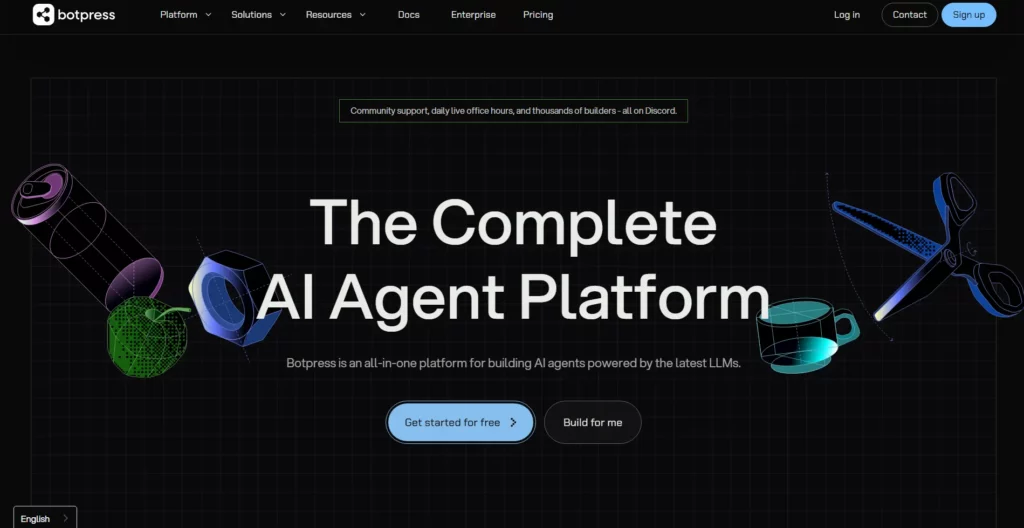
Botpress is a low-code platform for building autonomous agents with visual workflows=. It lets teams design agent logic with a drag-and-drop flow editor instead of coding every detail. Developers assemble workflows from modular nodes, each node encapsulating tasks like natural language understanding, API calls, or decision rules. Because of this visual approach, Botpress is ideal for customer support bots, onboarding assistants, or any agent that needs clear, auditable logic. Out of the box, Botpress includes integrations for email, CRM systems, ticketing tools, and databases, so agents can take real actions (send emails, update tickets, query records) without extra glue code. This makes it easy to deploy bots to websites, Slack, WhatsApp, and other channels with enterprise-grade features baked in.
Users praise Botpress for enabling quick prototyping and easy collaboration. Its key benefits include a graphical workflow builder and built-in tools that replace hundreds of lines of code. For example, instead of manually coding a multi-step process, teams use Botpress’s modules for NLU, memory, and routing, ensuring agents handle user queries reliably. This framework is best for teams that want robust automation with minimal coding, such as support teams deploying site chatbots or internal workflow bots.
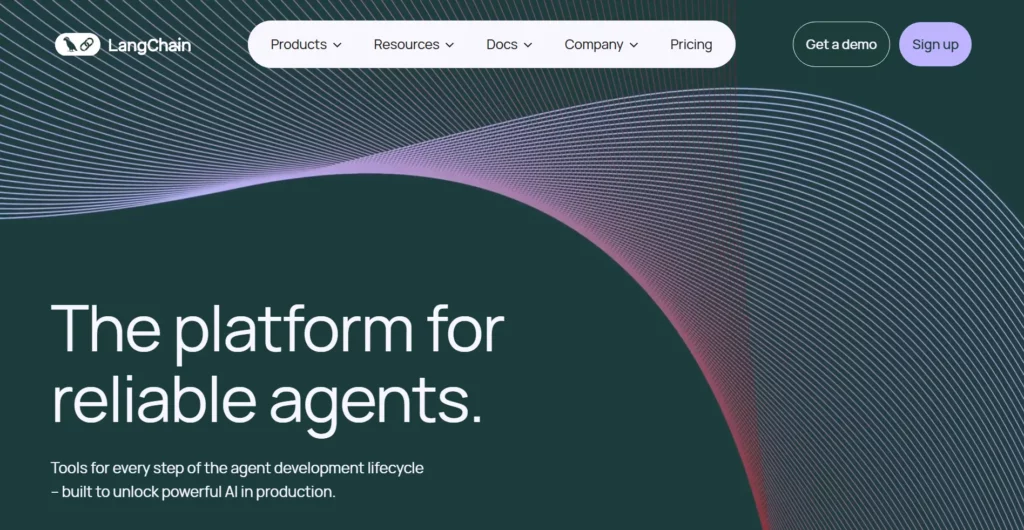
LangChain is the most widely adopted open-source framework for building LLM-powered agents. It gives developers full control to wire together language models, memory stores, tools, and prompts. In LangChain, you create “chains” of modules that process text, call APIs, or query databases, all coordinated by your Python or JavaScript code. This modular approach means an agent can take a user request, retrieve relevant facts from a vector store, update its context memory, and generate a response, all within a single LangChain flow. LangChain’s strength is its flexibility: it can integrate with Hugging Face models, Google or OpenAI APIs, vector databases (like Pinecone or Weaviate), and more.
Because it is so flexible, LangChain is especially popular for research, RAG (retrieval-augmented generation) systems, and complex workflows that need fine-grained control. It was one of the first frameworks to bring a modular design to agent building and is often described as an “operating system” for LLM applications. That power comes at the cost of complexity: developers must manage many moving parts (models, prompts, memory, tool calls). Still, companies building customized AI assistants, research tools, or automated analysts often turn to LangChain. Its optional LangSmith tools offer tracing and debugging. In short, LangChain lets developers script every step of the agent’s reasoning, making it a top choice for those who need complete transparency and control.
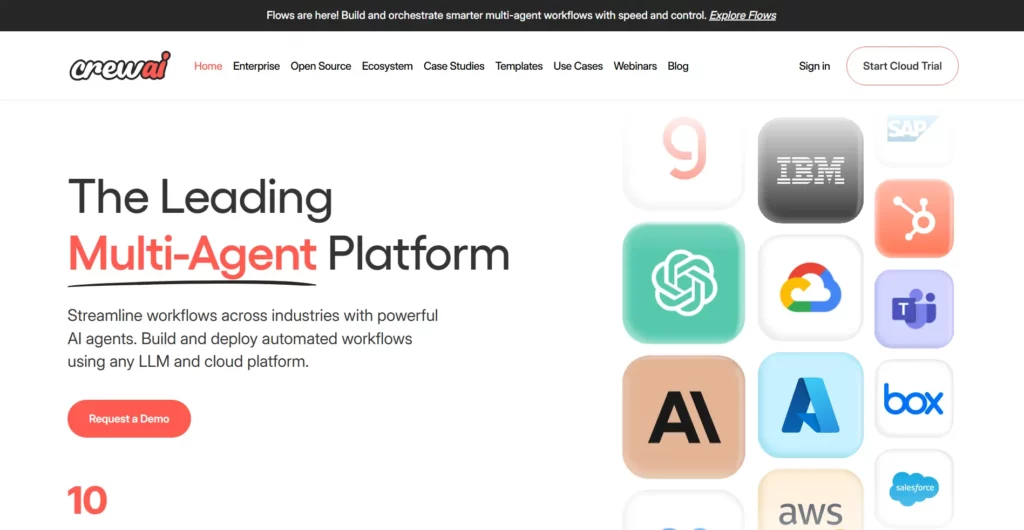
CrewAI is an open-source framework designed for collaborative multi-agent workflows. In CrewAI, you define a “crew” of agents, each with a distinct role or expertise. For example, one agent might research data, another might analyze it, and a third might compose a report. You give the crew a shared objective, and the agents communicate to achieve it. Behind the scenes, CrewAI manages message passing and a shared memory store. Agents iteratively plan, delegate, and coordinate tasks without you having to write their interaction logic from scratch.
This team-based approach makes CrewAI ideal for scenarios where multiple AI specialists need to work together. For instance, a startup could use CrewAI to build an AI product development team: one agent scouts for market data, another designs a solution outline, a third fetches relevant documents, and a fourth drafts code templates. CrewAI handles the orchestration, so developers define roles and goals, not every message sequence. Its main trade-off is simplicity: for very complex or highly dynamic workflows, you may hit the limits of CrewAI’s built-in patterns. Overall, CrewAI excels when you need rapid prototyping of task forces of agents, giving small teams a powerful way to simulate collaboration without building multi-agent logic from ground up.
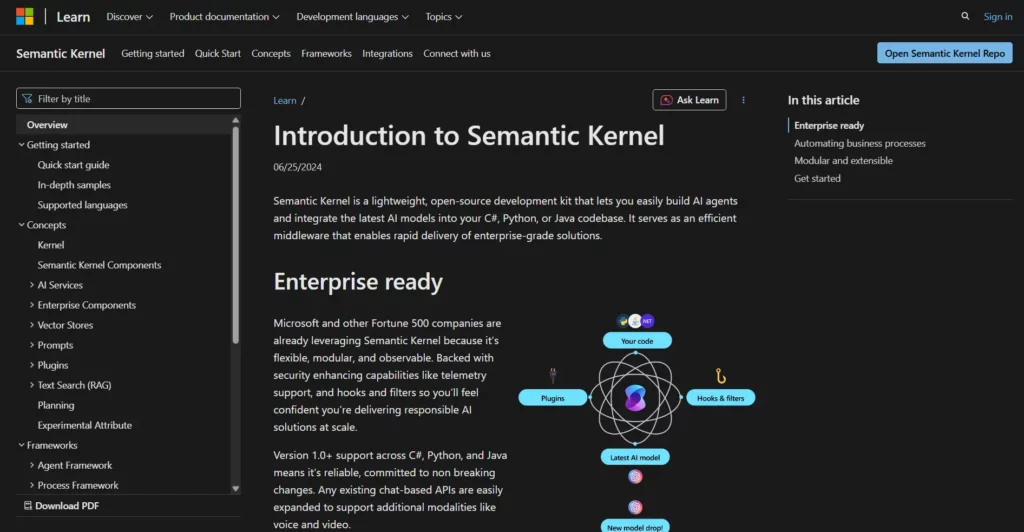
Microsoft’s Semantic Kernel (SK) is an enterprise-grade framework for embedding AI into applications. It uses a unique “skill”-based architecture: you define skills (functions, prompts, or plugins) and combine them into plans that drive agent behavior. Unlike low-code tools, SK is code-centric and works best with .NET or Python environments. Its design focuses on planning and memory. For example, you might give SK an enterprise chatbot skill, a data-retrieval skill, and a summarization skill, then let it compose tasks at runtime. SK manages the memory (storing facts or context) and lets you chain skills together in “semantic” plans.
Semantic Kernel is ideal for teams that want tight control and integration with Microsoft’s ecosystem. Its Python and C# SDKs allow agents to call external APIs or legacy systems. Because SK is open-source, it can scale to production without lock-in. In practice, it’s suited to advanced assistants or automation within large organizations. For example, an enterprise might use SK to build a virtual assistant that reads user queries in natural language, reasons over internal knowledge bases, and triggers a series of business actions (like creating support tickets or retrieving sales figures). This framework emphasizes developer control and security, so it’s well-matched to use cases like internal corporate agents or AI-enhanced enterprise apps.
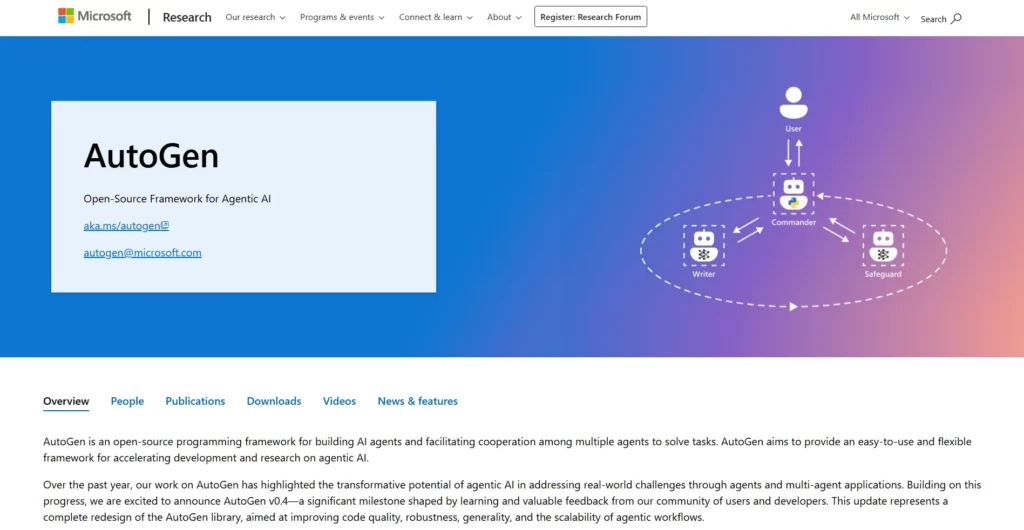
AutoGen is an open-source framework focused on structured multi-agent dialogue. It lets developers assign each agent a role (e.g. Planner, Researcher, Executor) and orchestrates message exchanges among them. You script the conversation flow: for example, one agent might propose a plan, others might gather data or refine that plan, and so on. AutoGen manages the back-and-forth and shared memory, logging every step for full auditability.
Because AutoGen uses explicit conversation threads and roles, it is powerful for complex problem solving. Teams can use it to build agents that, together, tackle tasks like writing code, conducting research, or handling customer cases. You maintain visibility into each agent’s reasoning through logs and message history. The framework is code-first, so it requires more setup than a visual tool. However, it pays off in transparency. For instance, in a customer support scenario, you could build a crew of AutoGen agents where one summarizes the customer’s issue, another searches a knowledge base, and a third drafts a response. AutoGen tracks each agent’s output step by step, making it ideal for mission-critical or research applications where you must trace decisions end-to-end.
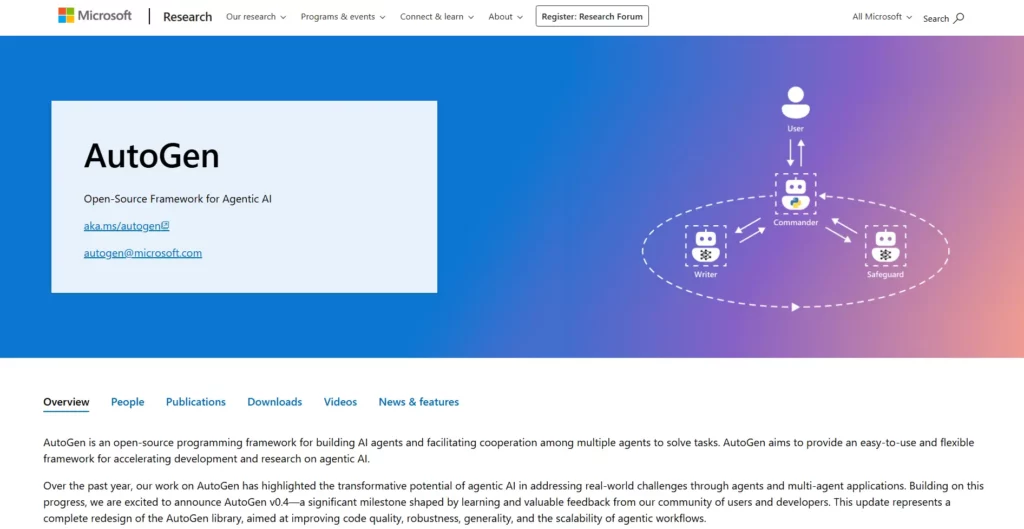
AutoGPT is an emerging framework for autonomous goal-driven agents based on GPT-style models. It turns a single chatbot into a self-planning assistant. You give AutoGPT a high-level goal (for example, “generate a market analysis report for product X”), and it automatically breaks it into sub-tasks and executes them. Under the hood, AutoGPT chains GPT calls with a local memory (often a vector database) and tool plugins (for web browsing, file I/O, APIs). It then loops: based on intermediate results, it replans and retries tasks until the goal is achieved.
This framework is useful for prototyping fully autonomous workflows where you want minimal human intervention. Developers can set up AutoGPT in minutes and see an agent crawling websites, writing code, and summarizing findings on its own. The trade-off is that AutoGPT’s free-form autonomy can wander off if not carefully configured. It requires setting guardrails and checks to avoid loops or hallucinations. Over time, you tweak its retry logic and toolset to keep it focused. Typical use cases include one-off data gathering tasks, iterative reports, or background analytics agents. In short, AutoGPT gives teams a quick way to create an agent that thinks forward and acts without constant prompting.
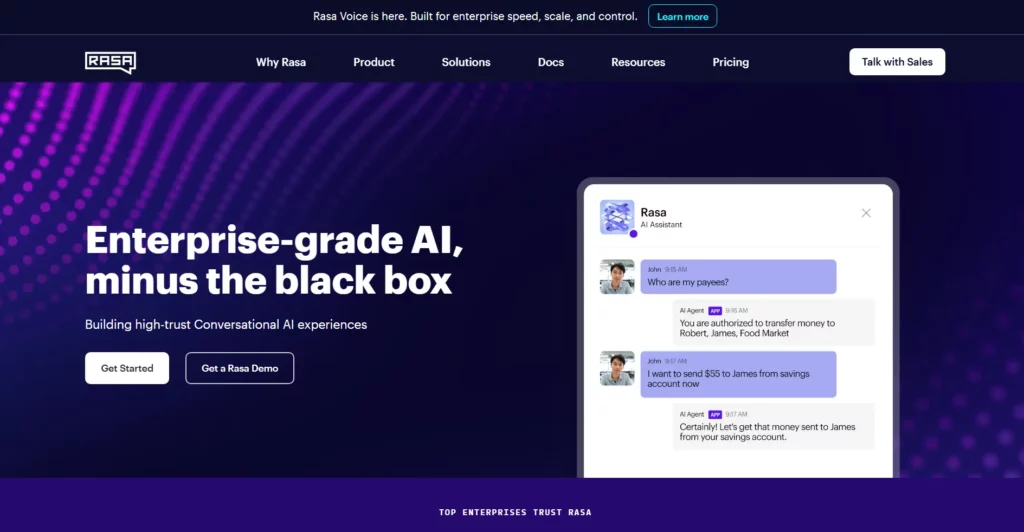
Rasa is a battle-tested open-source framework for building chat-oriented AI agents. It combines intent classification and entity extraction (NLU) with customizable dialogue flows. In Rasa, developers assemble interchangeable pipeline components to handle user input (for example, using machine learning or rule-based NLU) and then define dialogue policies that maintain conversation context over multiple turns. Because it is self-hosted and open-source, Rasa gives full control over data and models. Companies use Rasa to build sensitive or highly customized conversational bots (for instance, customer support chatbots or internal assistants) without sending data to third parties.
Rasa’s key strength is flexibility. You can replace or extend any part of the pipeline to suit your domain (e.g. swap in a custom intent classifier, or integrate a proprietary knowledge base). Its community provides connectors for messaging channels (Slack, WhatsApp, webchat) and tools for versioning and visualizing dialogues. We recommend Rasa for businesses with strong technical teams that need a tailored, scalable chatbot solution. Its low-level approach means more setup initially, but in return you get a powerful system that can handle complex multi-turn conversations with rigor.
Designveloper’s Expertise with AI Agent Frameworks
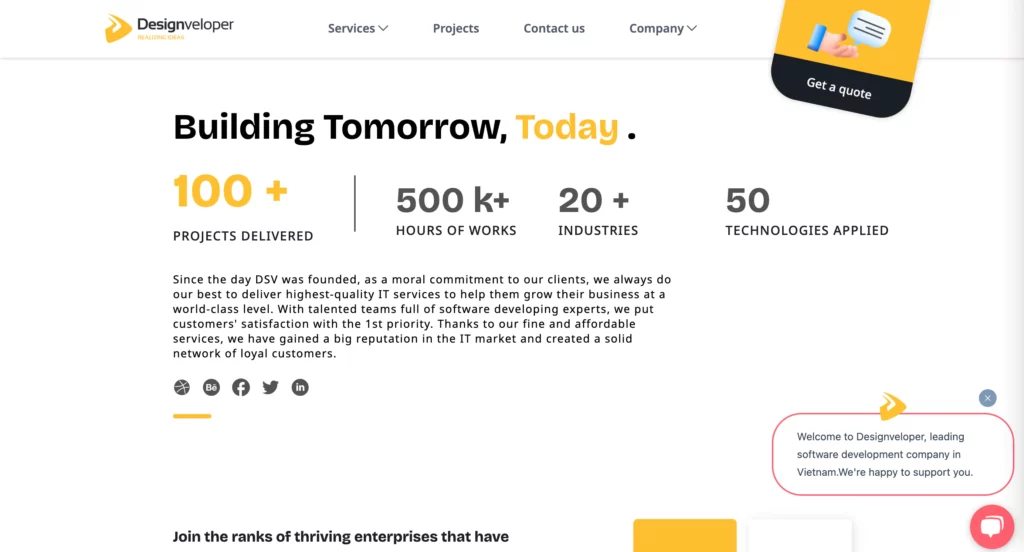
As a leading software development company in Vietnam, we at Designveloper bring deep experience in AI and agentic automation. Since 2013 we have helped startups and enterprises around the world realize ambitious ideas. To date, we’ve delivered 100+ successful projects (over 500,000 hours of work) for 50+ long-term clients. Our team of 100+ developers, designers and strategists excels in Web, Mobile, Custom Software, Cybersecurity, and AI development. We collaborate with clients across 15+ countries, building everything from fintech platforms to educational tools.
Our Clients
In practice, our clients benefit when we apply the best AI agent frameworks to solve their problems. For example, we have integrated LangChain and OpenAI into customer service solutions to automate support ticket triage. We’ve built Rasa-powered chatbots for clients who need complete data privacy. We regularly use Microsoft’s Semantic Kernel to embed AI features into enterprise apps. By selecting the right framework and fine-tuning it to the client’s needs, we deliver AI agents that work reliably.
Our focus on quality and collaboration is proven by our Clutch rating (4.9/5) and customer reviews. Clients note our “strong technical and UX capabilities” and timely delivery of complex projects. For instance, we recently led a multi-month initiative for a digital bank that required an AI-driven financial analysis tool (nearly 5.0 satisfaction rating). We also developed custom AI chat solutions for EdTech and VoIP clients, using our expertise in agent frameworks to accelerate development.
In short, Designveloper stands out because we understand both the technology and the business domain. We don’t just code; we partner with clients to choose and implement the right AI agent frameworks for their goals. Our ability to integrate LLMs, deploy secure architectures, and maintain long-term support means we turn AI concepts into reality. We actively invest in staying current with trends – for example, mastering emerging tools like Langflow, AutoGen, and CrewAI – so that our clients get the advantage of cutting-edge platforms. With our transparent Agile process and relentless focus on results, we ensure every AI project stays on time and on budget.
Conclusion
AI agent frameworks are revolutionizing how businesses build intelligent systems. By adopting these tools, teams “skip to the fun part” of building solutions and avoid reinventing the wheel. The seven platforms above represent some of the most robust, future-proof options available: from visual builders like Botpress to code-first systems like LangChain and enterprise frameworks like Semantic Kernel. Each framework comes with trade-offs, but all enable faster development and smarter automation than custom-building from scratch.
For companies seeking a partner to implement the best AI agent frameworks, our team is ready. We leverage these platforms daily to deliver value: reducing costs, boosting efficiency, and creating better user experiences. We understand that rapid innovation matters – yet so do security, scalability, and maintainability. By combining our proven track record with deep expertise in AI development, Designveloper helps clients unlock the full potential of AI agents and stay ahead in a rapidly changing market.


